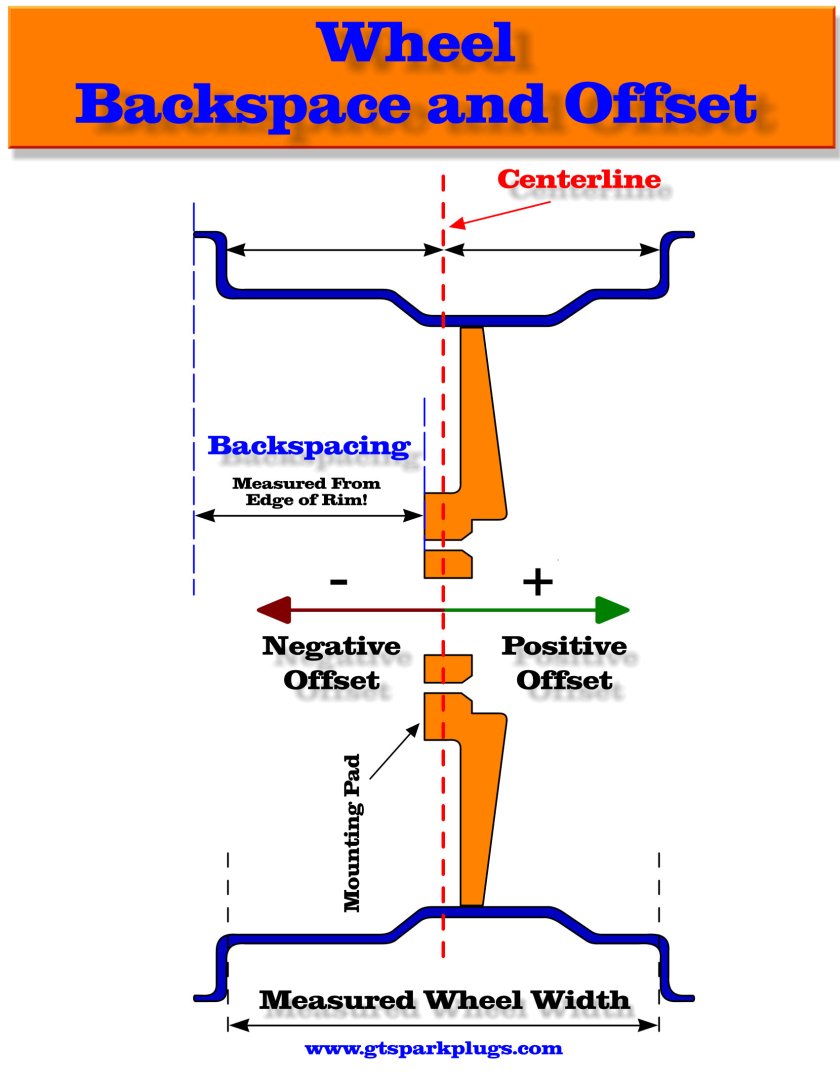I want to confirm my understanding of the tire charts listed on this forum. I have researched the issue of tire fitment ad-nauseam, and I thank everyone for bearing with me on an issue that has been beat to death. I understand that there are factors for each individual car that affect tire clearance such as suspension changes due to age or intentional modifications to suspension and fenders. However, in general, with a stock car, are there multiple configurations that give the perfect fit other than stock? I define perfect fit as not rubbing under any conditions. Are there different wheel and tire combinations that provide the exact and perfect fit? Is it the wheel offset that is the ultimate number for a perfect wheel fit and the different combinations of wheel diameter and wheel width that derive this number?
For example, apparently, a 15 x 7 wheel with a backspace of 4.25 is a perfect fit for a wheel to have no rubbing whatsoever with a stock suspension and fender configuration. The embedded tire chart in the forum sticky shows this combination of wheel diameter and wheel width as having a positive offset of 6. Now if the ultimate number is the offset, in this case positive 6, this would indicate I need to find a combination of wheel diameter and wheel width that equals a positive offset of 6. If this is true, this will help narrow down my choices. Reading all of the threads on this issue, I can see that I am not the only one grasping to have firm parameters that will provide a concrete number to ensure a wheel fit that has no rubbing issues at all.
As my example, I really like the polished torq thrust VN515. However, I can only get these wheels in a 15 x 6 with a 3.26 backspace, or 15 x 7 with a 3.76 backspace. Looking at the tire chart, a 15 x 6 with a 3.26 backspace is a negative 6 offset, and a 15 x 7 with a 3.76 backspace is also a negative 6 offset. Am I correct in my assumption that this does not fit within the "safe harbor" parameters listed on the tire chart? Meaning, it may or may not work? I am willing to go with 205/60-15 all the way around even though I wanted 215/60-15 if this means no chance of rubbing. The ultimate question, is there a concrete wheel diameter and width, other than stock 14 inch wheels, that will provide a completely no issue fit and if so is this number a positive offset of 6? Again, thanks for the input on an issue that has so many confused.
For example, apparently, a 15 x 7 wheel with a backspace of 4.25 is a perfect fit for a wheel to have no rubbing whatsoever with a stock suspension and fender configuration. The embedded tire chart in the forum sticky shows this combination of wheel diameter and wheel width as having a positive offset of 6. Now if the ultimate number is the offset, in this case positive 6, this would indicate I need to find a combination of wheel diameter and wheel width that equals a positive offset of 6. If this is true, this will help narrow down my choices. Reading all of the threads on this issue, I can see that I am not the only one grasping to have firm parameters that will provide a concrete number to ensure a wheel fit that has no rubbing issues at all.
As my example, I really like the polished torq thrust VN515. However, I can only get these wheels in a 15 x 6 with a 3.26 backspace, or 15 x 7 with a 3.76 backspace. Looking at the tire chart, a 15 x 6 with a 3.26 backspace is a negative 6 offset, and a 15 x 7 with a 3.76 backspace is also a negative 6 offset. Am I correct in my assumption that this does not fit within the "safe harbor" parameters listed on the tire chart? Meaning, it may or may not work? I am willing to go with 205/60-15 all the way around even though I wanted 215/60-15 if this means no chance of rubbing. The ultimate question, is there a concrete wheel diameter and width, other than stock 14 inch wheels, that will provide a completely no issue fit and if so is this number a positive offset of 6? Again, thanks for the input on an issue that has so many confused.






